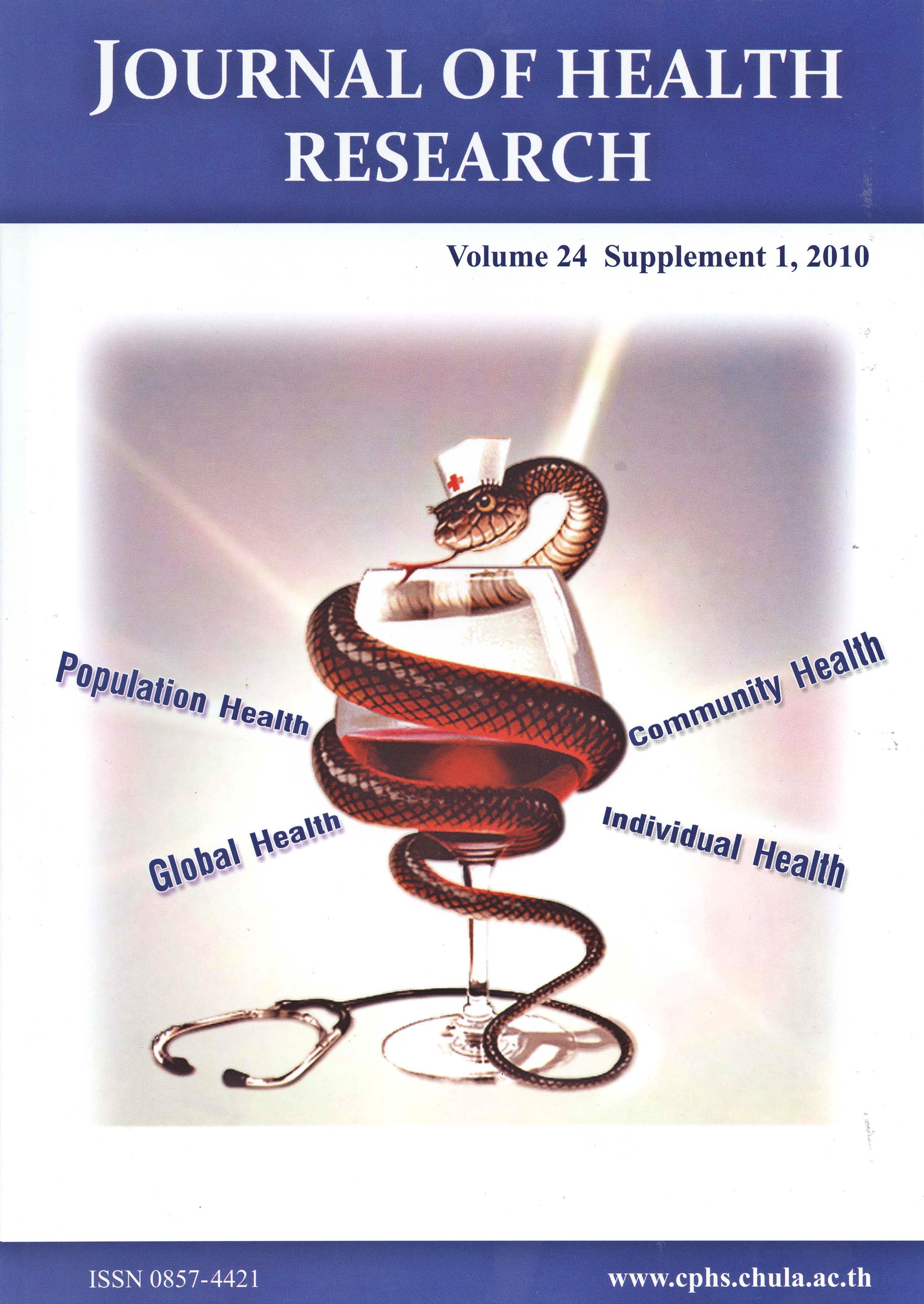Folk Knowledge About Avian Influenza and The Use of Personal Protective Equipment: A Qualitative Study
Keywords:
Folk knowledge, Avian Influenza, Use of personal protective equipments, Qualitative studyAbstract
Avian influenza (Al) outbreaks in Thailand from January 2004 to December 2005 resulted in 22 human cases, and 14 deaths. Three confirmed cases were reported in Suphanburi Province in 2004, one of whom died. Based on experiences if A1 in Suphanburi, this study aimed to assess and describe the nature of local residents' knowledge about A1 and identify their perceived benefits and barriers to the use of personal protective equipments (PPE). Four focus group discussions (FGD) with 38 participants in high and low infectivity areas were organized. In addition, ten in-depth interviews in high and low infectivity areas were conducted. Most of these cases were correlated with raising poultry or direct contact with dying poultry. The findings revealed that almost all of the participants perceived the cause of A1 to be from wild birds and/or migratory birds. There are differences in local knowledge and beliefs between participants in high and low infectivity areas. The participants in high infectivity areas have more knowledge than the participants in low infectivity areas. Some of the participants in low infectivity areas believed that A1 is caused by mosquitoes, wind, air and water. The use of PPE (gloves) is low among participants of all ages and types of poultry owned. Most use plastic bags instead of gloves to handle dying poultry. The benefits of using PPE (gloves, including plastic bags) related more to protection from odors rather than protection from A1 transmission. The potential barriers to PPE use were related to cultural factors, lack of knowledge, comfort, availability and cost. This study suggested that public health professionals should promote the use of PPE and hand washing by raising their awareness.







